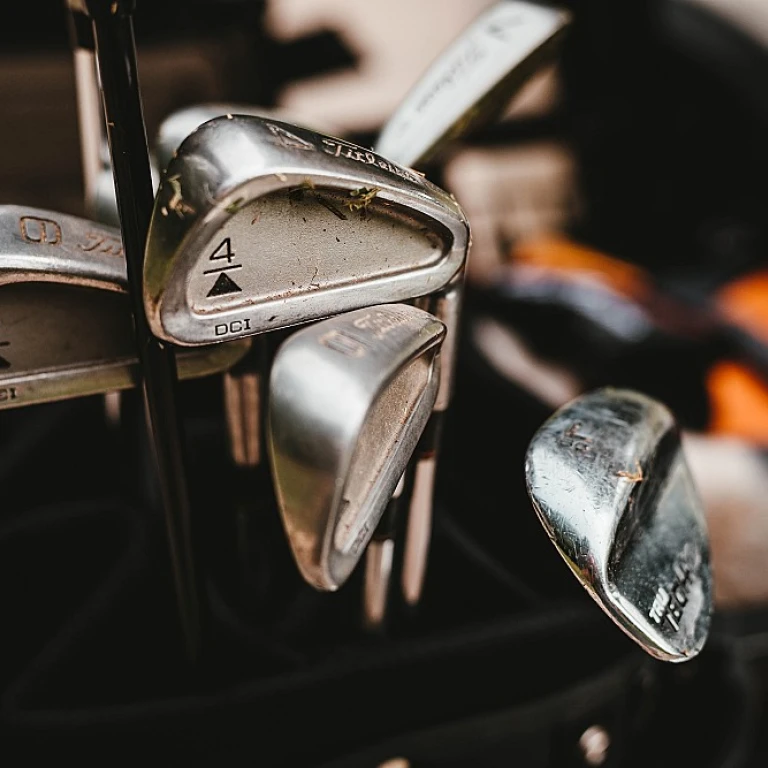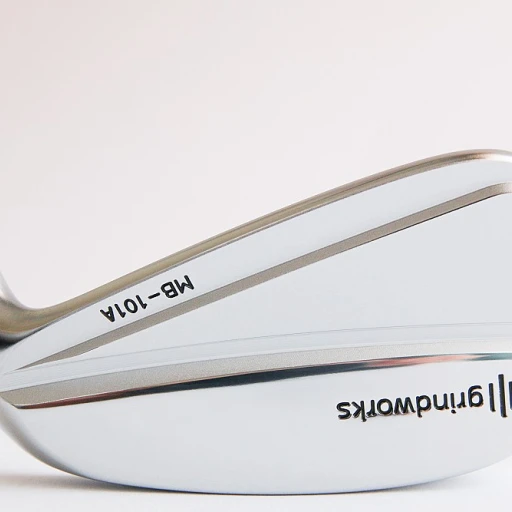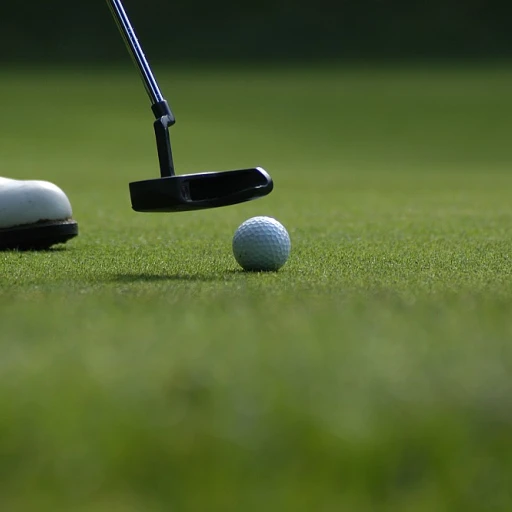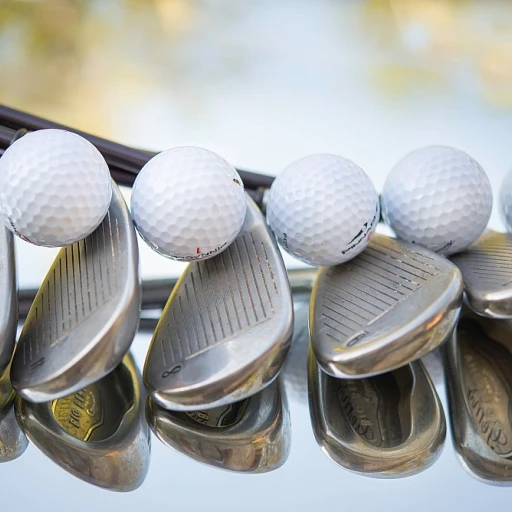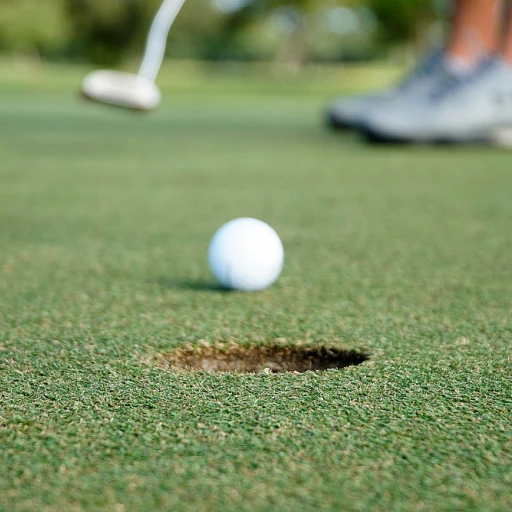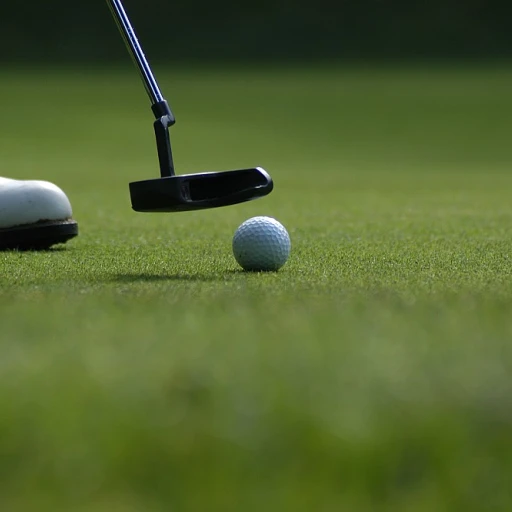
The Essence of Club Swing Weight
The Heartbeat of Your Game
In the world of golf, the swing is more than just a motion; it’s a symphony of precision and finesse. At the center of this orchestra, lies the essence of swing weight. Understanding how this crucial factor impacts your game means delving into the importance of the balance point—a pivotal element that can significantly affect the feel and performance of your golf clubs.
Swing weight, as golfers know, is not just about how much a club weighs on a scale. It encompasses how the weight is distributed between the head, shaft, and grip. This measure plays a decisive role in your swing's fluidity and rhythm, influencing your moment of inertia (MOI) and overall control.
Grasping the concept of swing weight involves familiarization with its measurement points. Commonly assessed using a swingweight scale, the weight is rated on a scale from A to F, with each classification further divided into ten points. This helps professional fitters gauge the perfect blend of head weight, shaft weight, and shaft length that suits your style, thus enhancing the 'feel' during play.
Using lead tape or experimenting with different shafts, you can fine-tune your clubs' swingweight to achieve optimal performance. Moreover, golf club fitting is essential, where professionals evaluate the length and weight measurement tailored to your unique swing.
Whether it's a full set of irons or a single club, every piece contributes to the harmony of your play. The journey continues as one explores how changes in weight will inevitably impact performance in our next discussion.
How Swing Weight Affects Performance
Performance Dynamics of Swing Weight
Understanding how swing weight affects your golf performance is crucial for any player aiming to refine their game. The swing weight of a golf club is essentially the balance point between the club head and the grip, and it plays a pivotal role in how the club feels during a swing. A well-balanced club can enhance your swing speed and accuracy, while an ill-suited swing weight can throw off your entire game.
When you swing a golf club, the distribution of weight between the club head and the grip affects the club's moment of inertia (MOI). A higher MOI means the club is more resistant to twisting, which can help maintain accuracy, especially on off-center hits. However, a club with a higher swing weight might feel heavier, potentially slowing down your swing speed.
On the other hand, a lower swing weight can make the club feel lighter and easier to swing, possibly increasing your swing speed. But, it might also reduce control, especially if the balance point is not aligned with your natural swing mechanics. This is why proper club fitting is essential to find the right balance that complements your swing style.
For those looking to fine-tune their swing weight, tools like a swingweight scale can be invaluable. These scales measure the swingweight point, helping you understand how different weights affect your swing dynamics. Adjustments can be made using lead tape to add weight to the club head or by altering the shaft length or weight. Each modification will shift the balance point, impacting the overall feel and performance of the club.
In conclusion, the right swing weight can significantly enhance your performance on the course. For more insights on optimizing your swing, consider exploring the role of shaft flex in your 7-iron swing.
Luxury Golf Clubs: A Class Apart
Luxury Golf Clubs: Elevating the Game with Elegance
Navigating the realm of luxury golf clubs, one quickly realizes they represent more than just tools for the game. They encapsulate elegance and precision, infused with cutting-edge technology and premium craftsmanship. Luxury clubs stand apart through meticulous design that pays close attention to swing weight adjustments. The fusion of materials, from the club head to the shaft, reflects innovation while maintaining perfect balance. This ensures players experience an optimal feel during swings, giving them the confidence to deliver their best performance under various conditions. The distinguished quality of these clubs owes much to their unparalleled attention to detail during the manufacturing process. Brands invest in perfecting the moment of inertia (MOI) so that the head weight complements the shaft weight. This creates a blend that accommodates different swing speeds without sacrificing control or precision. Additionally, luxury golf clubs often feature advanced weight measurement technologies, allowing customization that can meet the most discerning player's needs. Whether it's the balance point achieved by expertly calibrated swing weights or the precision of weight scales, every aspect of these clubs is designed to ensure a seamless experience. When it comes to club fitting, luxury options provide exceptional opportunities to tailor club length, swingweight points, and shaft lengths to individual preferences. This personalized approach ensures that the resulting set is not only a reflection of the golfer's style but also enhances their potential on the course. Choosing a luxury golf club is undoubtedly an investment in both form and function. It's not just about owning a beautiful set; it's about elevating one's game to a new level of sophistication and performance. For those contemplating such an investment, understanding the investment in a backyard putting green can further enhance the golfing experience at home, making it a complete lifestyle choice.Choosing the Right Swing Weight for You
Finding Your Ideal Swing Weight
Choosing the right swing weight for your golf clubs can significantly impact your game. It's important to understand your own strength, swing style, and golfing goals to determine what suits you best. The right swing weight will not only improve your control but also enhance the overall feel of the golf club, contributing to better performance.
Here's how you can zero in on the perfect swing weight:
- Consider Your Strength and Build: Stronger players might prefer clubs with a higher swingweight as this adds more momentum, whereas those with a slower swing might opt for a lighter swing weight for better control.
- Trial and Error: Using a swingweight scale, you can measure the balance point of your club and experiment with different weights. Adjusting club head weight or using lead tape can fine-tune this balance to suit your game.
- Consult a Professional: Professional club fitting services can help you navigate the complexities of swing weight. They often use advanced weight measurement equipment to find the perfect fit based on shaft length, head weight, and your particular needs.
- Look into Club Set Options: Some luxury golf brands offer adjustable swing weight points or interchangeable weights in their club sets, providing the flexibility to customize based on shifting performance needs.
Understanding how the swing weight affects your performance and making informed decisions about your club configuration will translate into tangible improvements on the course. For insight into optimizing your game with advanced golfing gear, make sure to explore how swing weight technology is evolving.
Innovations in Swing Weight Technology
Revolutionary Approaches to Enhancing Swing Weight
In recent years, the development of innovative technologies has brought notable changes to the way golfers approach swing weight. Manufacturers are now employing cutting-edge techniques to refine the equilibrium between club head weight, shaft weight, and overall club length to achieve an optimal balance point. This advancement is instrumental in crafting golf clubs that offer an unparalleled feel and performance. One such innovation involves the use of adjustable weight scales. By allowing golfers to fine-tune the weight of their clubs, these systems provide a more personalized fitting experience. Golfers can now make intricate adjustments to their club's swing weight, modifying how their clubs perform in accordance with their specific preferences and playing style. Moreover, advancements in materials have also played a significant role. With the integration of lightweight materials in shafts, golfers can experience a higher moment of inertia (MOI), facilitating a smoother and more controlled swing. This shift in design ensures the weight distribution within the club remains consistent throughout the swing, enhancing accuracy and distance. Notably, some high-end brands are embracing the concept of "dynamic fitting." Utilizing sophisticated weight measurement tools, including swingweight scales, clubs are meticulously tailored to meet the criteria of individual golfers. The result is a set of irons and a driver that complements the golfer's natural swing tendencies, helping them reach their peak performance. This evolution in swing weight technology is not just about adding extra grams or shifting weight points; rather, it's about elevating the essence of club fitting to a new dimension. As technology continues to progress, the landscape of golf equipment will undoubtedly see even more revolutionary changes, promising enhanced performance for golfers at every skill level.Expert Tips for Optimizing Swing Weight
Maximize Performance by Fine-Tuning Your Club's Swing Weight
Finding the perfect swing weight for your golf clubs can make a significant difference in your game, especially when dealing with luxury golf clubs. Here are some expert tips on optimizing your club's swing weight, to ensure you are not just playing golf, but mastering it.- Understand the Balance Point: Start by assessing the balance point of your club. When you hold the club horizontally on your finger, the point where it balances is crucial. Adjusting this balance point can influence your swing weight and thus your overall performance.
- Utilize a Swingweight Scale: A swingweight scale is an invaluable tool in your golf arsenal. It helps measure your club's swing weight, providing insights into the weight distribution between the head, shaft, and grip.
- Experiment with Lead Tape: For minor adjustments, apply lead tape to your club's head. This simple method allows you to add weight to a specific area, affecting the feel and swing weight without altering the club length or shaft weight significantly.
- Consider Shaft Weight and Length: Since these factors influence the swing weight, experimenting with different shaft weights or lengths can yield different results. Lighter shafts might provide a faster swing, while a longer shaft can add leverage and arc.
- Opt for Professional Club Fitting: A personalized fitting session can be instrumental in pinpointing your ideal swing weight. Professionals use advanced tools and technology to ensure your clubs match your unique swing characteristics.
- Evaluate Moment of Inertia (MOI): A club's MOI affects its stability during the swing. Tailoring the swing weight to complement the MOI can optimize how the club feels in your hands and how it reacts during play.

